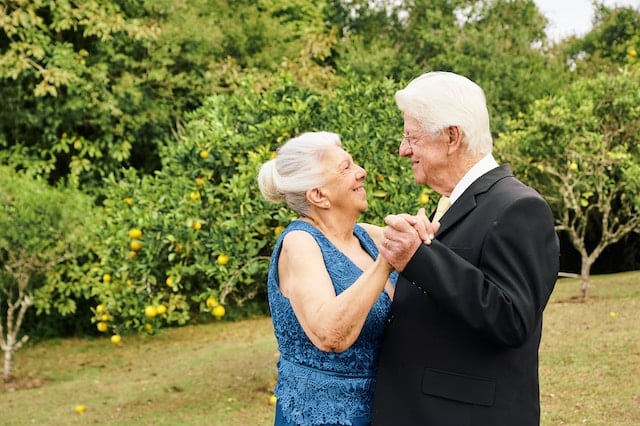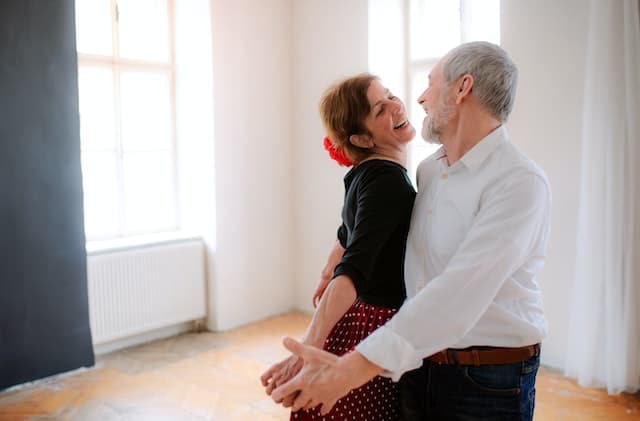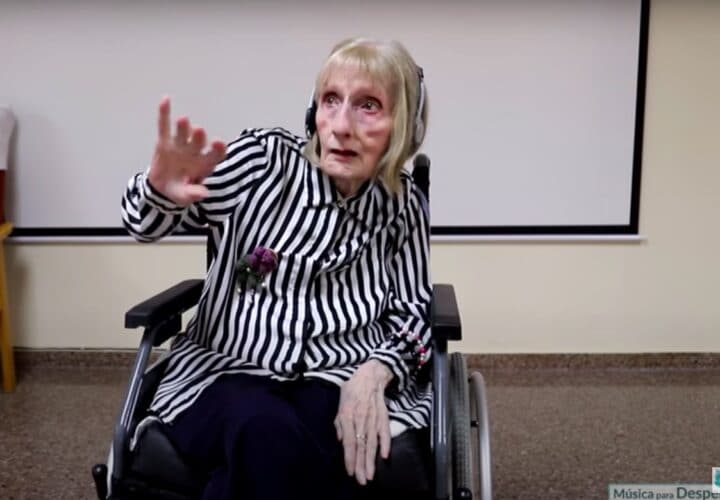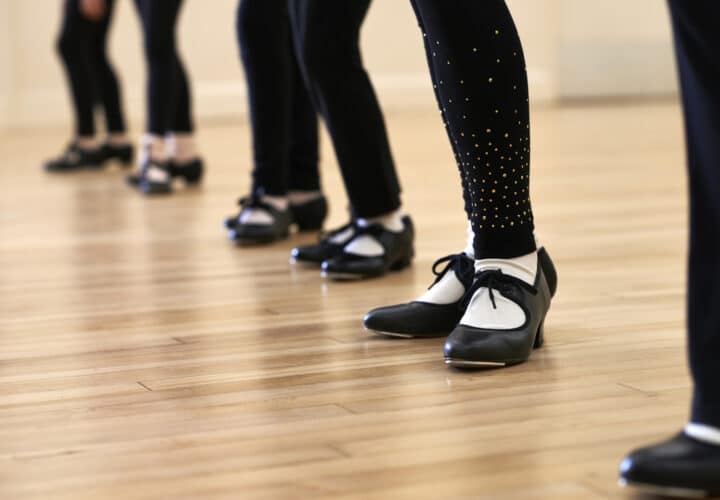As a yoga instructor, dancer, and a neuroscientist at the Embodied Brain Lab, Dr. Julia Basso shares insights from her research on how physical movement enhances the mind-body connection and protects brain health.
Dr. Julia Basso has been dancing since she was just a toddler. In college, she studied dance more seriously — and as she became more aware of — and more intrigued by — the connection between the body and the mind, she was also drawn to another academic pursuit: the then-burgeoning field of neuroscience. She went on to earn a PhD in neuroscience and today, she is a neuroscientist and the director of Virginia Tech’s Embodied Brain Laboratory, where she delves into the science behind the brain-body connection.
Also a certified yoga instructor, today Basso is studying how the mind-body connection can change the brain. She’s not alone in pursuing this line of inquiry: Exercise has been shown, in study after study, to support and protect brain health, and even promote cognitive skills like memory, by improving blood flow and reducing inflammation in the body. Meanwhile, yoga and meditation are also being studied for their potential to protect brain health — and even reduce dementia risk — through stress reduction and other neurological benefits. At the lab at Virginia Tech, Basso’s research involves the study of dance partners, and the activity in their brains while they dance. Studying the brain activity that occurs during dancing, yoga, and meditation, she and her colleagues are piecing together just what the mind-body connection can do for the brain.
Basso sat down with Being Patient EIC Deborah Kan to discuss the bidirectional relationship between physical movement and the brain, and the human ability to utilize the body to boost brain function. Read the transcript or watch the full video below.
Being Patient: I love that you have a background in dance. Before this Live Talk, you were telling me that in college, you were a dancer who also studied neuroscience. Tell me briefly about those early days and how you made that connection.
Dr. Julia Basso: I’ve been dancing my entire life, ever since I was about three or four. So, that’s always been a consistent practice in my life. When I arrived at Middlebury College in Middlebury, Vermont, I really wanted to deepen that practice. There is a wonderful dance program at Middlebury College led by Andrew Olson and Penny Campbell at the time. That practice is really kind of integrated into the world of somatic, really understanding the body and how to use the body as a tool and its interconnection with the nervous system.
So, already embedded in that information was all of this relationship between the body and brain.
Neuroscience was just starting to kind of pop onto the scene at that time. As a matter of fact, I was one of the first neuroscience students at Middlebury College. It was an integration between biology and psychiatry or psychology at the time. So, neuroscience was new, and I decided to study both of these pathways, looking at the body through dance and movement and then the brain. At that time, people were like, “Well, how do those two things connect?” For me, it was always really integrated: the body, the brain, these interesting connections.
Then, later on, pursuing my Ph.D. in neuroscience or in behavioral and neural science, I really started to understand that well, one of the reasons why there was such a disconnect between the body and brain is because early on, we as scientists as thinkers, really had this disconnect between body and brain with kind of the time of Rene Descartes and mind-body dualism. So now, we’re really starting to integrate. How is it that the body affects the mind and affects the brain, and vice versa? I’m the director of the Embodied Brain Lab at Virginia Tech, and we opened up in August 2021. And so we’re really delving into the science of the body-brain connection.
Being Patient: What type of research are you doing at the Embodied Brain Laboratory?
Basso: A few years ago, I developed this hypothesis called the synchronicity hypothesis of dance. So, it was coming from my background in dance, and especially in improvisation. How when we engage in this work of improvisational movement, there are these emergent movement forms that come together, these kinds of rhythms of people, and music and presence of bodies and space. It was very much related to the brain and neural oscillations and rhythms. I developed this hypothesis that states a few things, but essentially that dance and through movement practices, we can enhance neural synchrony or neural coordination between different parts of our brain. For example, dance enhances sensory and motor coordination.
There are cognitive processes as we’re engaging in choreography. There are creative and rhythmic processes, all these things. So, the different brain areas kind of come together. They integrate. The flow of information is enhanced during dance. That’s called intra-brain synchrony, the enhancement of brain flow or brain connectivity. Subsequently, when we dance with other people, we can actually enhance the link or the communication of the rhythms between two people’s brains, and that’s called inter-brain synchrony. This is something I’m really, really excited about.
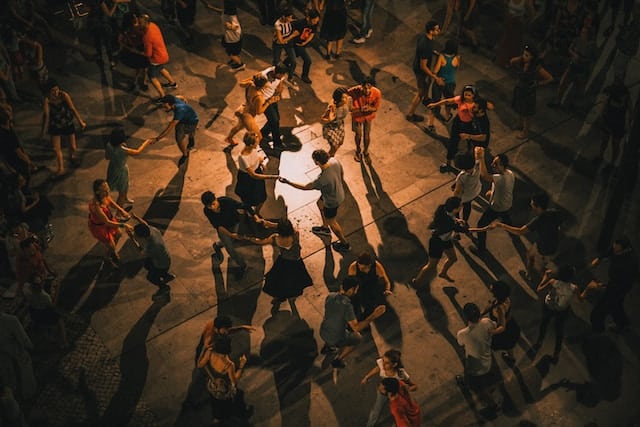
What we do in the lab is that we study the brains of two or more people. We’ve been studying dyads. This can be mother-child relations, this could be romantic partners. We had Lil Buck and his crew come through for the Memphis Jookin: The Show. We studied Lil Buck’s brain along with Eric, one of his premier dancers. We actually were able to look at the synchronicity or the movements of the brain together while they danced. These are such professional high-level dancers that when they’re doing these mirroring practices, following one another, you can’t tell who is following who is leading, they’re so synchronous in their movement. It was really beautiful to watch.
Then we can look at the level of the brain of what’s happening. So, we’re starting to see that in professional-level dancers, and even through some, we ran an interventional study where we trained improvisational dance. What we’re starting to see is that through these training practices, we can start to enhance the rhythms of the brain.
Being Patient: When you were looking at two people dancing together and scanning their brains, did you see the same patterns? What did you see about what’s going on inside their brains?
Basso: When you look at the brain signal through electroencephalography, through EEG, they look like sine waves. So, these rhythms are these patterns, and when you look at kind of what comes out naturally from the whole brain, you see these rhythms: fast rhythms, slow rhythms. What we do through statistics is we take them apart, and we look at, say, the alpha rhythm, or the theta rhythm, these different frequencies. What it means is that, say, if we look at theta activity, which would be between four to eight hertz, and that’s essentially, the brain is operating for the action potentials, or how the brain is firing four to eight times per second, these populations of neurons, the flow of information in and out of these neurons.
What we’re seeing is that, at these particular rhythmic frequencies, the brains start to oscillate together in the same rhythmic patterns. Not only are we seeing the flow of information within one individual brain, but between two brains. We’re very interested in this by enhancing the way that brains are rhythmically communicating with one another if that can actually enhance social connection. And so that’s kind of the end goal, right?
Being Patient: When we spoke to Sara Lazar on meditation previously on Live Talks, she said that one of the reasons why they’re finding that meditation is so good for the brain is because you’re actually operating at a different wavelength when you meditate. Different patterns and wavelengths are good for the brain in strengthening neuroplasticity. Did you find that difference in wavelengths when you studied different forms of movement?
Basso: Take the example of meditation. When you start meditating, right, and you go into this meditative space, maybe your eyes are closed. There is a particular waveform called the Alpha activity that really starts to come on board. When we’re anxious, or when we’re kind of in this hyper cognitive activity where we’re in that kind of mode for a lot of our day, like the sympathetic activity. Through meditation, we can bring us a bit into the parasympathetic: calm the nervous system, calm the brainwaves down, and get them to slow down, right? So, this idea of neuroplasticity, being able to utilize the mind and being able to control your brain rhythms, is very important because the idea is flexibility.
We want to be able to flexibly navigate the world, right? If in our day-to-day we’re working, we’re really stressed out, and then we want to be calm. We want to come home, we want to calm down. We don’t want to stay in that sympathetic hyper-activated mode. We want to be able to come home, calm down, relax, maybe without a glass of wine— to do it naturally, which would be really wonderful, right? So it’s this ability that utilizes meditation, dance, and these other practices to help create a flexible nervous system. And so, through these practices, when we intentionally say, “Okay, we’re going to meditate now.” We’re going from whatever state we’re in, and we’re going to practice pranayama. We’re going to practice deep breathing practices, right? Then, we can utilize those practices to help calm us down.
“Being able to utilize the mind and being
able to control your brain rhythms is
very important, because the idea is flexibility.”
I have a study showing that when we go into normal, everyday life and encounter what is called psychosocial stressors, and this could be like, you get a phone call from your boss, or you get that email that really hypes you up, that in your sympathetic nervous system, you’re gonna have actually a decreased stress response when you go into your every day. That, I think, is the really cool thing about it. You know, it’s great to meditate, it’s great to do all these practices. But if they’re actually changing your nervous system, such that you can go into the world and then have a more calm response to what’s going on in our stressful lives, that’s the really important thing.
Being Patient: When people are dancing, are their brains working differently than when they’re maybe just reading a book? How does this brain-body connection impact what’s happening in the brain?
Basso: When we’re at rest, and when we’re kind of in this meditative state, it’s more this alpha activity, kind of restful state. We’re seeing that when we start to dance, and we just presented this work at the American College of Sports Medicine conference last week, and we had Lil Buck’s brain on display there, we’re starting to see that it’s driving more of this theta activity. Interestingly enough, when people are watching or observing dance, and we as dancers know this when you watch another dancer, your brain does not look like it’s resting. Your brain actually looks like it’s dancing, which is a really cool thing called the action observation network or the mirror neuron network. We’re in our heads, kind of thinking and looking and seeing like it is that we’re dancing. So, theta activity, it’s this type of activity that comes on board when we start to navigate and engage in something called spatial navigation.
We’re starting to move through the world and process time and space a little bit differently. It’s a theme that’s very much connected to our memory systems, especially in an area of the brain called the hippocampus. A lot of work in the rodent world has been done in this field. As we kind of navigate through time and space, data activity comes on board. It helps us to learn and remember information and consolidate information.
Being Patient: What are some of the theories you can make now based on scanning dancers’ brains?
Basso: I’m a behavioral neuroscientist, so my first thing is that I always look at behavior. I always want to see the outcome of behavior before I look at the brain. What we’re seeing is that, interestingly enough, that dance seems to be training some of these social factors. Dance is increasing empathy. It’s increasing mindfulness, it’s decreasing stress, and it’s helping this social connectivity piece.
Even with a single acute session of dance, there are impacts on the level of mental health. We see decreased levels of depression and anxiety and also increased levels of self-esteem and positive affect. So, I love it when I have an intervention that decreases your negative affective states, increases your positive affective states, and then also increases your social connection.
“Even with a single acute session of dance, there
are impacts on the level of mental health.
We see decreased levels of
depression and anxiety and also increased levels
of self-esteem and positive affect.”
That was some of the work we did during the pandemic when we couldn’t be together in person. So, our whole world turned online. We even did this through the screen. We were dancing online together. We’ve found that dance enhances mental health aspects and increases the social connectivity aspects. Those who gain the most in their mental health also showed the biggest gains in their social connectivity. So, I call this the body-mind-community connection. Now, we’re starting to investigate some of those behavioral outcomes with these brain outcomes. Our hypothesis is that we’re going to connect these social outcomes to the relationship to inter-brain synchrony, and our first findings are that it’s happening at this alpha-theta activity, kind of where meditation puts you.
Being Patient: What role does music have in dance and the mind-body connection? Have you studied the impacts of different kinds of music?
Basso: One of the projects that the lab has ongoing is a project on music therapy for individuals with Alzheimer’s disease and related dementia and their caregivers. We’re very interested in how music and if you don’t have language, whether that would be a child hasn’t developed language or in later stages of dementia when there’s language loss— how can we communicate?
“Dance is increasing empathy. It’s increasing
mindfulness, it’s decreasing stress, and
it’s helping this social connectivity piece.”
We’re thinking that movement and music might be one of these ways to do that and to create this inter-brain synchrony or interpersonal synchrony, especially important for someone with Alzheimer’s disease and their caregiver or other kinds of relations.
I was just reading this recently that some of our memory for language, or maybe our episodic memory, might be shared in different memory networks than our memory for music. And so these things might be preserved for longer. That’s one of the hypotheses about why we’re able to connect through music.
Also, yesterday, I was in a music therapy session with individuals with dementia, we were playing the drums together. We were playing something where we communicated through drumming. So first, I would go, then one of the individuals would go, right? And we would go back and forth. Even though that person wasn’t speaking, we were able to communicate through drumming.
“We’re thinking that movement and music
might be one of these ways to do that and
to create this inter-brain synchrony or interpersonal
synchrony, especially important for someone with
Alzheimer’s disease and their caregiver
or other kinds of relations.”
So, we had a conversation, and it was really magical and wonderful. I would say, in the absence of language, for whatever reason, we can utilize these nonverbal forms of communication, like dance, and music, to communicate and to connect.
Being Patient: In a previous Live Talk with Rebecca Chopp, she spoke to us about taking an art class after her dementia diagnosis and unleashing a skill for painting she didn’t know existed. Creativity, for some reason, seems like something that can flourish. What do we know about the creative part of the brain and how it’s impacted by dementia?
Basso: With dementia, and some of these kinds of Alzheimer’s disease and mild cognitive impairment even early on, we see that there’s a loss in what is called our executive functioning network. So, that would be our prefrontal cortex, our hippocampus, these essential seats of learning and memory. These are the most plastic brain regions. These are the brain regions that respond most readily to exercise to physical activity. So there are some other networks, right, that harbor creativity, that may be preserved that might not be degenerating or having that neurodegenerative process occur, that can be sustained.
The brain is very plastic. We know that the brain when in the absence of a part of the brain if there’s a traumatic brain injury, the brain preserves itself. So, maybe another part takes over. In the absence of the ability to form episodic memories or kind of remember information, there might be other kinds or modes that take over. Creativity might be one of these ways and might be an important integral way to tap in.
“In the absence of the ability to form
episodic memories or kind of remember
information, there might be other
kinds or modes that take over.”
We know that early on in evolution, one of the first things we were doing to communicate with each other in the absence of verbal language was moving, dancing, and recreating rhythms and patterns. So, it’s a very early form of communication. Just thinking theoretically, like maybe we utilize those techniques and go back to those early forms of communication to really tap into health and wellness for individuals that don’t have that capacity anymore.
Being Patient: What’s the next phase of your research?
Basso: We’re working with a whole range of individuals. Our newest study is mother-child dance for moms with PTSD and postpartum depression. We’re looking at whether we can use some of these tools to enhance that connectivity between that dyad. We have a range of studies going on in individuals with disabilities and autism spectrum disorder, looking to see if dance can help to enhance social connectivity. We partner with different community partners like CEP Virginia, for example.
We just started work with Grounded, a program out in Memphis, Tennessee, to work with individuals, vulnerable populations in adolescence and in kind of the school system who are exposed to violent communities. We’re seeing if we can use dance and creative art programs to enhance health and wellness in a range of individuals.
Katy Koop is a writer and theater artist based in Raleigh, NC.
